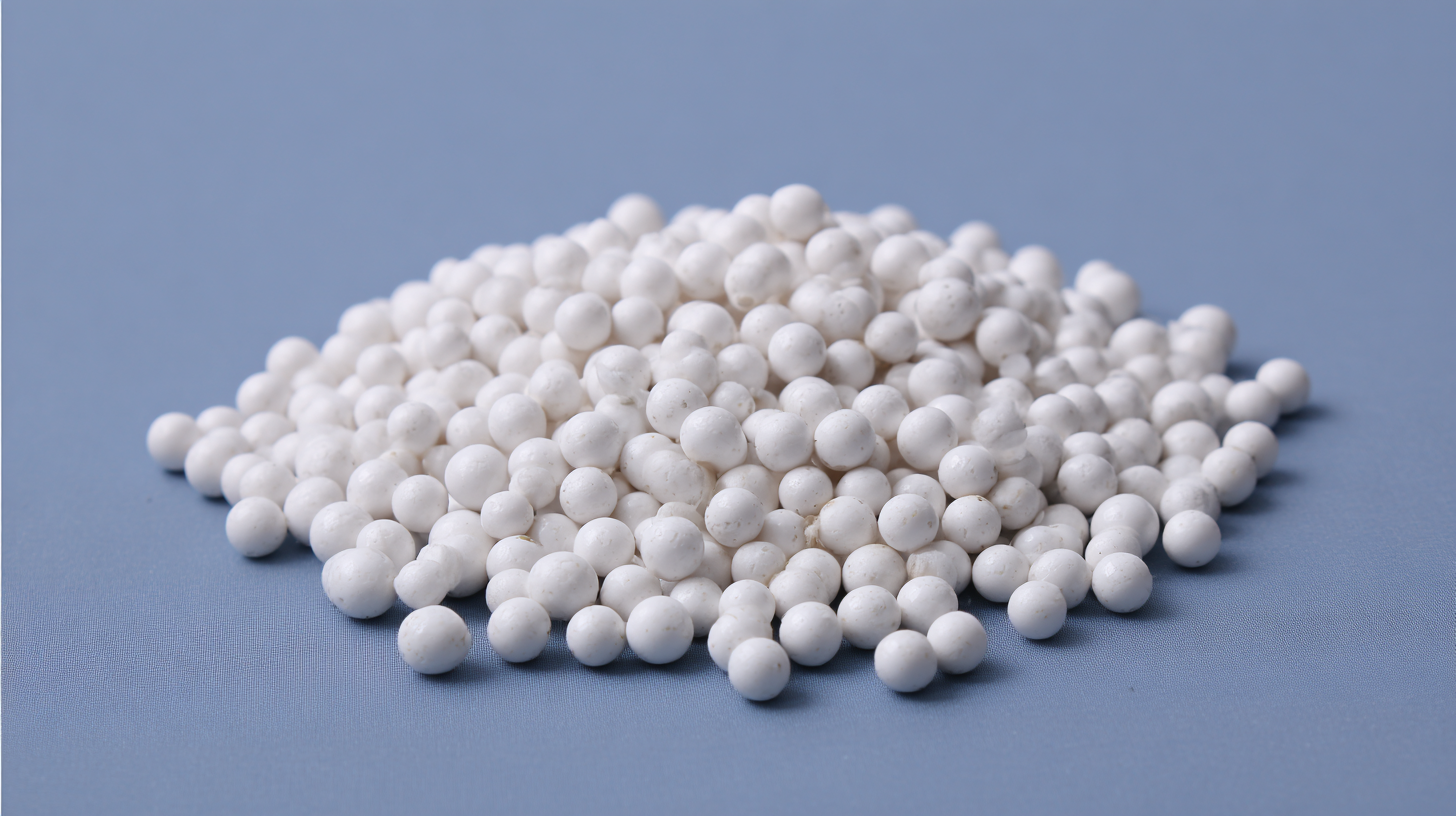 Yttria Stabilized Zirconia Beads have become a vital component in various industrial applications due to their superior properties, including exceptional hardness, wear resistance, and thermal stability. According to a recent market research report, the global demand for these beads is anticipated to reach $1.2 billion by 2025, driven by their extensive use in grinding and milling processes across industries such as ceramics, paints, and pharmaceuticals.
Yttria Stabilized Zirconia Beads have become a vital component in various industrial applications due to their superior properties, including exceptional hardness, wear resistance, and thermal stability. According to a recent market research report, the global demand for these beads is anticipated to reach $1.2 billion by 2025, driven by their extensive use in grinding and milling processes across industries such as ceramics, paints, and pharmaceuticals.
However, despite their advantageous characteristics, users often encounter common issues such as bead breakage, contamination during processing, and challenges in maintaining the optimal size and distribution. Understanding these challenges is essential for industries aiming to maximize the efficiency and effectiveness of their operations while ensuring the highest quality output.
As China positions itself as a leading manufacturer of Yttria Stabilized Zirconia Beads, addressing these common issues becomes crucial for sustaining competitive advantages in the global market.
Yttria Stabilized Zirconia (YSZ) beads are widely recognized for their exceptional properties, which make them invaluable in various industrial applications. One of the most significant attributes of YSZ is its high toughness and wear resistance, which enhance the lifespan of components used in abrasive environments. This resistance to wear allows manufacturers to reduce downtime and maintenance costs, leading to increased productivity. Moreover, YSZ's thermal stability and low thermal conductivity make it an ideal choice for applications that involve high temperatures, such as in thermal spray coatings and as insulating materials in kilns and furnaces.
In addition to its mechanical and thermal properties, YSZ beads exhibit excellent chemical stability, allowing them to withstand aggressive environments without degradation. This quality is crucial in industries like ceramics, where purity and consistency are paramount. The beads are also utilized in the production of high-performance fuel cells, thanks to their ability to conduct oxygen ions at elevated temperatures. This versatility has positioned YSZ as a preferred material across various sectors, including aerospace, electronics, and manufacturing, underscoring its role as a cornerstone in advancing industrial technology.
| Issue | Description | Impact | Solutions |
|---|---|---|---|
| Wear Resistance | Yttria stabilized zirconia beads may wear down over time due to high energy impacts. | Reduced efficiency and quality of grinding processes. | Regularly monitor bead condition and replace when necessary. |
| Chemical Compatibility | Certain chemicals may degrade the properties of the beads. | Production downtime and potential contamination of materials. | Conduct compatibility tests with the specific materials used in the process. |
| Temperature Sensitivity | High temperatures can alter the microstructure of zirconia beads. | Decreased mechanical properties and potential for failure. | Maintain working temperatures within recommended limits. |
| Size Variability | Inconsistencies in bead size can affect uniformity in milling. | Inconsistent product quality and performance. | Source beads from reputable suppliers and check sizing regularly. |
| Cost | High initial investment compared to other milling media. | Budget constraints for smaller operations. | Evaluate total cost of ownership, including durability benefits. |
When working with yttria stabilized zirconia (YSZ) beads in industrial applications, several common challenges can arise that may affect both efficiency and product quality. One significant issue is the fragility of these beads; while they are highly durable against wear, they can be susceptible to cracking under extreme mechanical stress. This necessitates careful handling during both transportation and mixing processes to minimize breakage and ensure consistent performance in grinding and milling operations.
Another challenge is the variability in the quality of YSZ beads sourced from different manufacturers. Even slight differences in particle size, density, or composition can lead to inconsistent results in industrial applications. This variability can complicate process optimization and may require additional time and resources to mitigate issues related to bead selection. Ensuring a reliable supply chain with a trusted vendor is crucial for maintaining high standards in both product quality and machine performance. By addressing these challenges proactively, industries can better leverage the advantages that yttria stabilized zirconia beads offer.
 Yttria stabilizer zirconia (YSZ) beads are renowned for their excellent mechanical properties and high resistance to wear, making them a popular choice in various industrial applications. However, the performance of these beads can be significantly affected by temperature and environmental factors. At elevated temperatures, YSZ tends to undergo phase transformations, which can lead to changes in its toughness and hardness. Such transformations can compromise the integrity of the beads during grinding or milling processes, resulting in suboptimal performance and reduced product quality.
Yttria stabilizer zirconia (YSZ) beads are renowned for their excellent mechanical properties and high resistance to wear, making them a popular choice in various industrial applications. However, the performance of these beads can be significantly affected by temperature and environmental factors. At elevated temperatures, YSZ tends to undergo phase transformations, which can lead to changes in its toughness and hardness. Such transformations can compromise the integrity of the beads during grinding or milling processes, resulting in suboptimal performance and reduced product quality.
Moreover, the surrounding environment plays a crucial role in determining the effectiveness of YSZ beads. High humidity levels can lead to the absorption of moisture, which may cause structural weaknesses and accelerate wear. Additionally, exposure to corrosive chemicals can further deteriorate the performance of the beads. Therefore, it is essential for industries utilizing YSZ beads to carefully monitor and control both temperature and environmental conditions to ensure optimal performance and longevity of these materials in their specific applications.
When utilizing yttria stabilized zirconia beads in industrial applications, wear and tear can significantly impact performance and efficiency. To tackle this issue, implementing proactive strategies is essential. One effective approach is to choose the right bead size and density for your specific application, as this can enhance durability and reduce wear. Additionally, using a proper milling medium that matches the hardness of the materials being processed can diminish the stress on the beads, prolonging their lifespan.

Another tip involves regular maintenance and monitoring of the equipment. Establishing a routine check of the machinery can help identify any signs of wear early on, allowing for timely replacements or adjustments. Furthermore, incorporating cooling systems during operations can minimize excessive heat build-up, which often leads to degradation.
Lastly, consider optimizing the operational parameters such as speed and duration of milling processes. Slower speeds can lessen the impact on the beads, reducing their wear. Adjusting these factors not only enhances the life cycle of the zirconia beads but also ensures consistent product quality in your industrial application.
When working with Yttria Stabilized Zirconia (YSZ) beads, proper maintenance and care are essential for ensuring their longevity and optimal performance in industrial applications. One of the most common practices is to regularly inspect the beads for wear and damage. Over time, YSZ beads can become worn from repeated use, which may lead to decreased efficiency in processes such as grinding or milling. Employing a routine inspection schedule allows operators to catch any signs of wear early and replace beads as necessary, preventing costly downtime.
In addition to inspections, cleaning procedures play a critical role in maintaining YSZ beads. Contaminants can accumulate on the beads during operation, potentially affecting the final product quality. To mitigate this, it is crucial to establish a cleaning regimen that utilizes appropriate solvents and methods that won’t damage the beads. Regularly scheduled cleaning not only ensures the beads remain effective but also extends their usable life, contributing to an overall reduction in operational costs.
Employing these best practices can significantly enhance the performance and durability of YSZ beads in various industrial settings.
